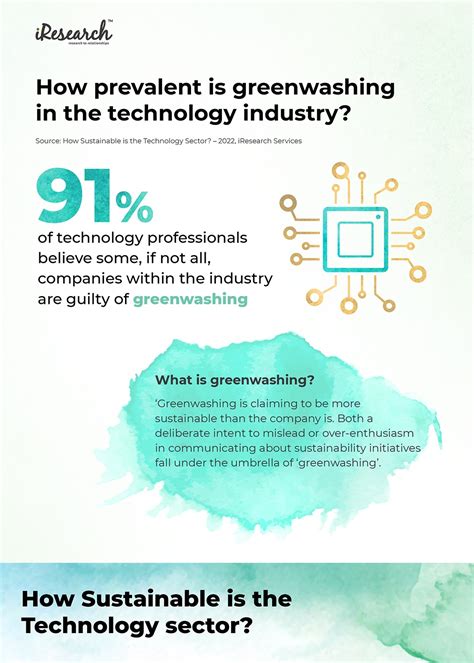Introduction:
In the rapidly evolving tech industry, sustainability has become a pivotal concern for both consumers and businesses. However, amidst the growing demand for eco-friendly products, the issue of greenwashing has emerged as a significant challenge. Greenwashing refers to the deceptive marketing practices that make a product appear more environmentally friendly than it actually is. This article aims to provide a forensic guide for detecting greenwashing in tech specifications, helping consumers and businesses make informed decisions.

1. Understanding Greenwashing in Tech Specifications
a. Misleading claims: Pay attention to vague or ambiguous statements that lack specific evidence or data. For instance, a tech product might claim to be “sustainable” without providing any details about the materials used or manufacturing processes.
b. Overstated environmental benefits: Be wary of products that exaggerate their environmental impact. Look for concrete evidence, such as certifications from recognized environmental organizations, to support the claims made.
c. Lack of transparency: Companies engaging in greenwashing often fail to provide detailed information about their products’ environmental footprint. Ensure that the tech specifications offer comprehensive data on energy consumption, material sourcing, and recycling processes.
2. Identifying Key Indicators of Greenwashing
a. Ecolabels and certifications: Familiarize yourself with reputable environmental certifications and ecolabels, such as Energy Star, EPEAT, and the Forest Stewardship Council (FSC). Check if the tech product carries these certifications and verify their authenticity.
b. Life cycle assessment (LCA): Look for products that have undergone a life cycle assessment, which evaluates the environmental impact of a product throughout its entire life cycle, from raw material extraction to disposal.
c. Carbon footprint: Pay attention to the carbon footprint of the product. A lower carbon footprint is generally a positive indicator, but be cautious of products that claim to have a negligible carbon footprint without providing supporting evidence.
3. Analyzing the Data
a. Energy efficiency: Compare the energy efficiency of similar tech products. Look for products that consume less energy and have a longer lifespan, as these factors contribute to a lower environmental impact.
b. Material sourcing: Investigate the origin of the materials used in the product. Companies that prioritize sustainable sourcing and recycling practices are more likely to be transparent about their environmental efforts.
c. End-of-life considerations: Assess the product’s end-of-life options, such as recycling and proper disposal. Products with a focus on minimizing waste and facilitating recycling are more likely to be genuinely eco-friendly.
Conclusion:
Detecting greenwashing in tech specifications requires a critical eye and an understanding of environmental principles. By following this forensic guide, consumers and businesses can make informed decisions and support companies that genuinely prioritize sustainability. It is crucial to demand transparency and hold companies accountable for their environmental claims, ensuring a greener and more sustainable tech industry.
